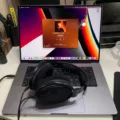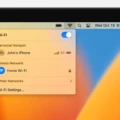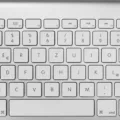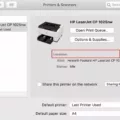Are you having trouble getting your Thunderbolt port to work? It can be frustrating when a device won’t connect, especially if all you have is a single Thunderbolt port. Fortunately, it’s easy to test if your Thunderbolt port is functioning properly. In this blog post, we’ll walk you through the steps for testing your Thunderbolt port and troubleshooting any issues that may arise.
First, make sure the cable is firmly connected to both your device and the Thunderbolt port on your computer. Sometimes, all you need to do is remove the cable, shake it around, flip the directions, and firmly re-seat it to restore your connection. However, if this doesn’t work then it’s time to take further action.
The next step is to check whether the device appears in System Information on your Mac. To do this, press and hold the Option key then choose Apple menu > System Information. In the window that appears, see if the Thunderbolt device is listed below Hardware in the list on the left. If so, then your device should be ready for use!
If not, there are still other options available for troubleshooting purposes. Try connecting another device to the same Thunderbolt port on your Mac and see if that works instead. If not then try restarting your Mac as this may help fix any issues with connections made via Thunderbolt ports.
You can also check chained devices by disconnecting all devices and cables from your Mac and connecting just one of them directly using its own cable. On your, Mac chooses Apple menu > System Settings then click Network in the sidebar (you may need to scroll down). Here you should find a Thunderbolt Bridge service on the right-hand side which you can click Details from here too – if this isn’t present then you’ll need to add one first before proceeding any further with testing or troubleshooting purposes.
If none of these steps have resolved any issues with connecting devices via a single ThunderBolt port then it might be time to replace that cable with a brand new one – this should hopefully restore optimal connection performance between devices once again!
We hope this blog post has been helpful in guiding you through how to test if a Thunderbolt port is working correctly – good luck!
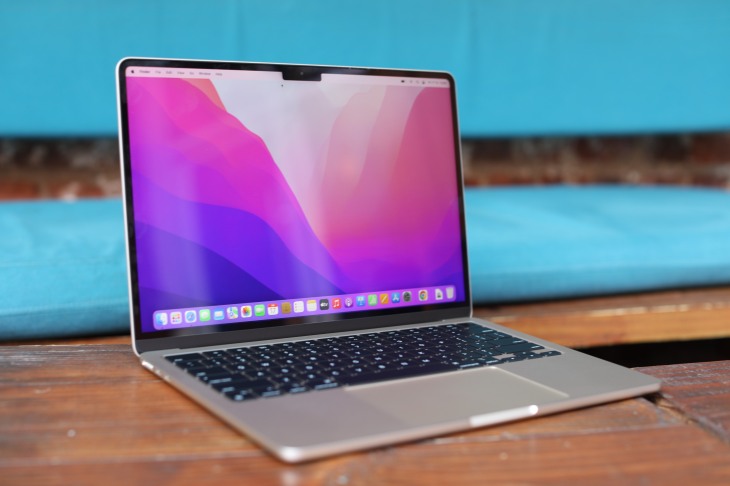
Verifying If Thunderbolt Is Working on a Mac
To make sure your Thunderbolt is working properly on your Mac, you’ll want to first check the Thunderbolt port itself. Make sure that the port is firmly connected to your Mac and that there are no loose connections. If everything looks good there, open System Information by pressing and holding the Option key, then choosing Apple menu > System Information. In the window that appears, look for the Thunderbolt device listed below Hardware in the list on the left. If it’s listed there, you can be confident that your Thunderbolt is functioning properly.
If your Thunderbolt device isn’t listed in System Information, try unplugging and plugging it back in again. If it still doesn’t appear, you may need to contact the manufacturer of your device for further troubleshooting steps or assistance.
Troubleshooting a Non-Functioning Thunderbolt Port
If your Thunderbolt port isn’t working, it could be caused by a multitude of issues. It could be a hardware issue with the port itself, or it could be due to a faulty cable connection. If the cable is loose, try firmly reseating the cable on both ends and make sure it’s securely connected. If that doesn’t work, try flipping the direction of the cable and see if that helps. If these steps don’t work, then you may need to replace your Thunderbolt cable with a brand-new one. It’s also possible that there is a problem with your computer or device’s software or hardware that may require repairs from an experienced technician.
Testing an IMAC Thunderbolt Port
To test your iMac’s Thunderbolt port, you’ll need to start by disconnecting all other devices and cables from your Mac. Then, connect a device directly to the Thunderbolt port on your iMac using its cable. If the device is recognized and you can use it, your iMac’s Thunderbolt port is working properly. If the device is not recognized or you can’t use it, restart your Mac and try again. Alternatively, if you have another Thunderbolt device that you can connect to your iMac, try connecting that one instead of the first one. If both devices are recognized and you can use them, then your iMac’s Thunderbolt port is functioning correctly.
Activating Thunderbolt Port on Mac
To activate the Thunderbolt port on Mac, open System Preferences from the Apple menu and select Network. In the Network window, select the Thunderbolt Bridge service on the right side of the window. Click Details to open the configuration settings for that service. Make sure that “Enable Thunderbolt Bridge” is checked, then click OK. Once enabled, your Mac will be able to use its Thunderbolt port.
Testing a Port Connection on a Mac
Testing a port connection on a Mac computer (earlier than macOS 11 Big Sur) is easy. First, open the Network Utility app by typing ‘Network Utility’ in the search field and selecting it from the results. Once the Network Utility app is open, select Port Scan from the options at the top of the window. Then, enter an IP address or hostname in the text field and specify a port range. Finally, click Scan to begin testing your ports. If a TCP port is open, it will be displayed in the results section of the window.
Troubleshooting Issues with Thunderbolt on Mac
The most common cause of Thunderbolt not working on a Mac is that the necessary software hasn’t been installed. It’s also possible that the Thunderbolt cable isn’t connected properly, or that the port you’re using isn’t a Thunderbolt port (it could be a USB-C port instead). Finally, make sure that your device is compatible with your Mac and any other devices being used. If your Mac has an older version of macOS, it may not be compatible with certain Thunderbolt devices.
Checking Port Status on a Mac
Checking the port status on your Mac is a simple process. First, open the Network Utility, which can be found in the Utilities folder in your Applications folder. Once you’ve opened it, click on the “Port Scan” tab and enter your IP address into the text box. Then click “Scan” to check all of your port statuses. The results will show you all of the open ports, as well as any closed ports that may be present. You can then use this information to troubleshoot any networking issues or security problems that you may have on your Mac.
Resetting the Thunderbolt Port on a MacBook Air
Resetting your Thunderbolt port on your MacBook Air is a simple process, but it’s important to follow the steps carefully:
1. Make sure your computer is powered off completely and unplugged.
2. Unplug the Thunderbolt cable from both the computer and any other device it may be connected to.
3. Wait for about 30 seconds before plugging the Thunderbolt cable back into both devices.
4. Power on your MacBook Air and check if the port is working correctly.
5. If not, restart your computer and check again to see if the Thunderbolt port is now functional.
6. If all else fails, try resetting System Management Controller (SMC) by following these steps:
• Press and hold the power button for at least 10 seconds and then release it.
• Wait a few seconds before pressing the power button again to turn on your Macbook Air again.
Your Thunderbolt port should now be reset successfully!
Enabling Thunderbolt on an iMac
To enable Thunderbolt on your iMac, you first need to make sure that the Thunderbolt port is enabled in your computer’s system settings. To do this, open System Preferences and click on “Security & Privacy”. In the “General” tab, make sure that the selection for “Allow applications downloaded from” is set to “App Store and identified developers”.
Once this is done, you can open Network Preferences. You can do this by going to System Preferences > Network, or by clicking on the Wi-Fi symbol in your menu bar and selecting “Open Network Preferences”. In the left side menu, select Thunderbolt Bridge and ensure that Configure IPv4 is set to “Using DHCP”. This will enable your iMac’s Thunderbolt port.
Conclusion
The Thunderbolt port is an incredibly useful connection technology that allows you to connect a wide variety of devices to your Mac. However, if you’re having trouble with your Thunderbolt connection, it’s important to take the time to diagnose and fix the problem. First, check the physical connection between the device and your Mac; it might just need to be reseated or replaced. If that doesn’t work, check your Mac for any software issues or additional services that may need to be enabled. With a bit of troubleshooting, you should be back up and running in no time.

